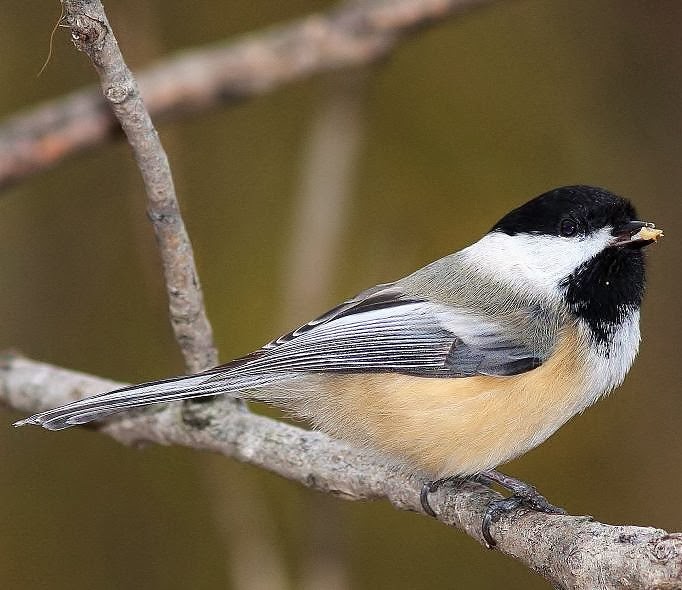 |
| Photo by Guy Poisson (Internet Bird Collection) |
Common name:
black-capped chickadee (en); chapim-de-barrete-preto (pt); mésange à tête noire (fr); carbonero cabecinegro (es); schwarzkopfmeise (de)
Taxonomy:
Order Passeriformes
Family Paridae
Range:
The black-capped chickadee is a resident species in Canada and the northern United States, from Alaska, though southern Yukon and the Northwest Territories, and into Ontario and Quebec, and as far south as Oregon, northern Colorado, Illinois, Ohio and Pennsylvania. Outside the breeding season there are some southward movements within this range.
Size:
These birds are 12-15 cm long and have a wingspan of 16-21 cm. They weigh 9-14 g.
Habitat:
This species is found in deciduous and mixed forests, mostly in temperate areas but also boreal forests. They also use willow thickets, cottonwood groves, rural gardens and urban areas. They are present from sea level up to an altitude of 3.200 m.
Diet:
During spring and summer they feed mainly on insects and spiders, especially caterpillars. During the rest of the year they take both invertebrates and also seeds, berries and other plant material. They are also known to eat carrion, such as dead deer, skunk fat and dead fishes.
Breeding:
Black-capped chickadees breed in April-July. Both sexes excavate the nest cavity on a dead or rotten branch, but they also use natural cavities, abandoned downy woodpecker Picoides pubescens nests and nest boxes. Inside the cavity the female builds a nest cup made of moss and other coarse materials, lining it with soft materials such as rabbit fur. The female lays up to 13 white eggs with fine reddish-brown dots or spots, which she incubates alone for 11-14 days while the male brings her food. The chicks are fed by both parents and fledge 12-16 days after hatching, but continue to receive food from the parents for several weeks. Each pair usually raises a single brood per year and the young reach sexual maturity after 1 year.
Conservation:
IUCN status – LC (Least Concern)
This species has a very large breeding range and a global population estimated at 34 million individuals. The population has undergone a large increase of 16% per decade over the last 4 decades.







